Donkey Kong's Discount Replacement: Hero in the Castle of Doom
D! K! Donkey Kong! He may be the leader of the bunch, but by 1985, America knew him well. A little too well. Unlike today, when the game and its sequel are considered classics, at the time arcade operators thought it was just another old game for the dustbin of history. And where there are worthless circuit boards, there are enterprising entrepreneurs trying to make them worthwhile again. Did they succeed in making a better game than Nintendo’s classic?
The board
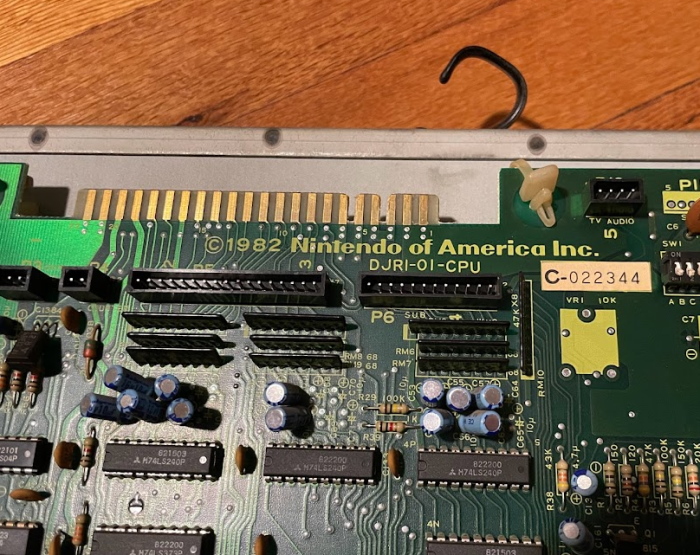
Here it is; a Nintendo Donkey Kong-class board. Actually, it’s a Donkey Kong Jr., as we can see from the ID number. This arcade game is made up of two circuit boards; a “sound” board on top, and a video board on bottom. (In this case, they’re both attached to a metal frame, which is nice, and likely a remnant of in-cabinet shielding) This is much like the Sega Zaxxon, which is to be expected thanks to the Ikegami Tsushinki connection. But this post isn’t about that.


What this post is about instead is the smaller board which has implanted itself into the socket that on a stock Donkey Kong or Donkey Kong Jr. would be occupied by a Z80 CPU (Nintendo’s love affair with the 6502 still being a bit off). You can’t blame my poor photography abilities here, by the way. The labels have been filed off to maintain the secrecy of the board.

It’s worth noting that there’s nothing unique about replacing the ICs in a circuit board as an upgrade kit. Future Spy was sold as an upgrade for Zaxxon. And Nintendo’s own contemporaneous VS. System (which deserves a post of its own) sold games in the form of a “PPU ROM Kit”, which only had the PPU and ROM; you had to use your existing VS. System circuitboard. I believe but can’t confirm that similar kits were available for the System 1. Take a look at the VS. Baseball manual.
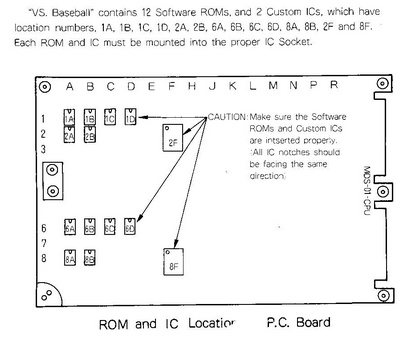
This conversion kit was not brought out by Nintendo, however, but instead by a company called Crown Vending. But it seems to date back to an earlier title by Century Electronics, developed by Seatongrove UK Ltd. Conversion kits for other companies’ boards seemed to be their stock-in-trade, with titles like 1983’s Hunchback (remember that title, it’ll be on the test– but be careful with that video, as it is very much from the flashing-lights era of 80’s gaming), being released for both the Namco Galaxian hardware and the Donkey Kong hardware. Pictured below is the Donkey Kong version running in the MAME emulator.
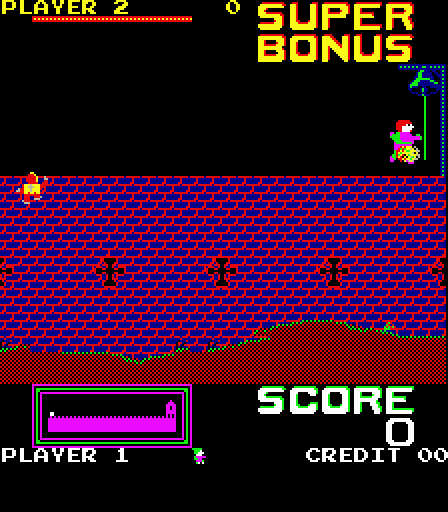
A fun thing about the Galaxian conversion (also shown using the MAME emulator) is that it still maintains a starfield, since that is handled in hardware on that board.
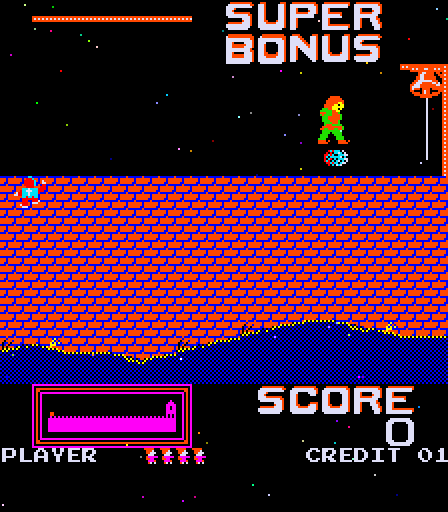
What all of Crown/Century/Seatongrove’s conversion kits for Donkey Kong and Galaxian had in common was that they replaced the Z80 CPU with a Signetics S2650 CPU. This is an odd choice, a 1975 CPU that imitated a 1965 minicomputer, and never saw much success on the market. It did see some use in game consoles like the 1978 Interton Video Computer 4000 and the 1982 Emerson Arcadia 2001.
Why it was used here is unclear. Given that it was less successful on the market, perhaps they just got a good deal on them in bulk, or had a programmer who was familiar with it. Most likely it’s because Century Electronics’ custom arcade board, the CVS “Convertible Video System”, used it– but then that just raises the question of why it was used there. In any case, it forms part of the custom CPU board that makes it so an enterprising pirate with an EEPROM burner can’t just copy their work that easily.
Getting it to work
The Nintendo Donkey Kong hardware dates back to 1981; 1980 if you include its predecessor Radar Scope. As you’d expect, while it has an edge connector, it doesn’t quite match the JAMMA standard. All these issues I’m describing actually have nothing to do with the conversion kit.
What you might not expect is that the edge connector is not even used much of the time on a real Donkey Kong cabinet. (Except, possibly, for cocktail tables?) All of the signals on the edge connector are also available on the variety of connectors. If you do power it over the edge connector, you still need to provide a 10-pin “rainbow” cable to connect the power from one board to the other. The Zaxxon had this too, but it was already fitted; in this case, I needed to provide my own, as the prior owner had used this board with a separate harness.

With both boards now getting power, you just need to get video and sound out. Unfortunately, in neither case did Nintendo’s decision match what later arcade boards would do. The video signal is inverted relative to the later standards of JAMMA. So your board will need to flip the signal while adding an appropriate offset. The audio signal is unamplified; ironically, since I’m using a supergun that will lower an amplified signal, I don’t need this, and could just grab that signal as a line-level output. But my adapter is designed for use in actual cabinets as well.

With the rainbow cable and the right adapter, though, the PCB should display its output to anything that handles JAMMA. For today we’ll be using the Axunworks Supergun Mini combined with an Open-Source Scan Converter.
Get out of that castle, it’s doomed

So, after all that, what kind of game is Hero in the Castle of Doom? What is worth replacing Donkey Kong Jr. for? The game has an interesting feature where you can rotate the joystick on the attract mode to see it explain itself.

The game is essentially a maze chase game where you need to collect all treasures. I hear it compared to Tutankham, but given the lack of an attack mechanism and the smaller, dense mazes, the better comparison to my mind is Namco’s Mappy or Pac-Man. Like Mappy, our hero needs to collect all items while outsmarting enemies (in this case, boulders). Unlike Mappy or Pac-Man, there is no way to directly fight your opponents; however, the ladders are completely safe zones. (Of course, you have a timer)
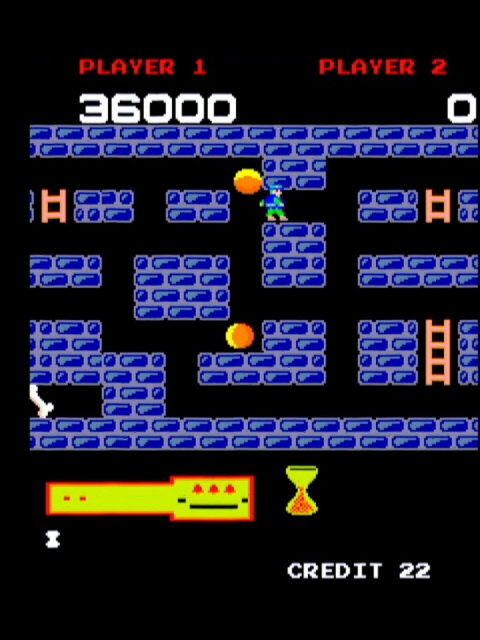
While it looks like you’re on a 2D side-scroller, and it even plays a falling animation when you go downwards, you actually have full four-dimension movement. Your hero really wants to always be moving, much like Pac-Man, though you can pause on a staircase to catch your breath and outsmart the enemy AI. Like the wireframe cube enemies in Aspect Legend, the boulder AI is generally predictable and gameplay depends on predicting its patterns and manipulating the position.
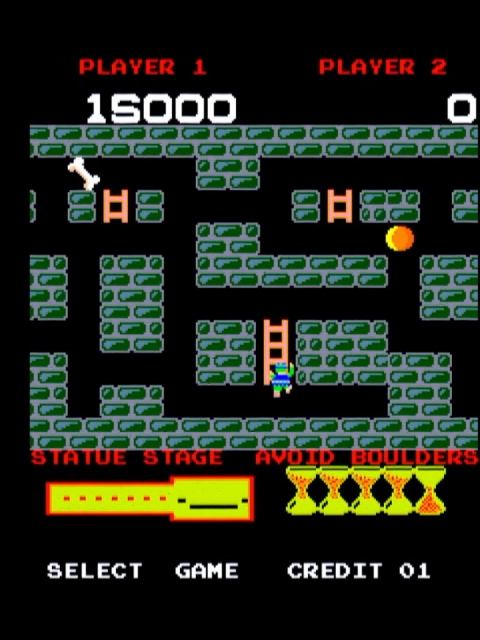
As was common of video games in the period, there are interstitial screens between levels. In this case, you see your hero climbing a tower, much like the interstitials in Donkey Kong but using the same sprites as in-game. A message plays as well.
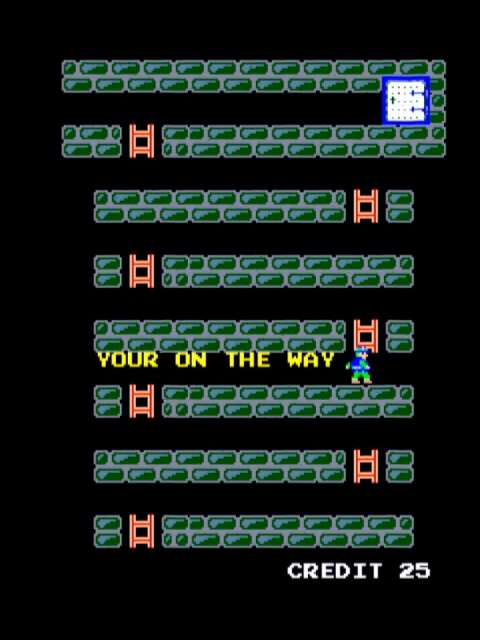
One thing to note that, much like the Sega Zaxxon board, Nintendo’s Donkey Kong Jr. used primarily a discrete audio circuit. Therefore, the game music has to use the notes and sounds provided by Donkey Kong Jr. Despite this, it doesn’t seem to suffer significantly, and sounds don’t sound particularly out of place.
Hero in the Castle of Doom is surprisingly addicting once you get the hang of it, though its basic artwork and traditional gameplay probably didn’t impress many arcade players in 1985. Still, it’s very likely that this PCB probably did lengthen the life of whatever cabinet it was installed, until it was replaced with something else. It’s not a timeless classic, but it’s not a bad stopgap either.
So the game is a bit old-fashioned– and perhaps that’s not a surprise. Hero in the Castle of Doom did not originate as a conversion kit, after all. You saw those 1984 copyright dates, despite sources saying this version dates to 1985.
Hero of time
Hero in the Castle of Doom originated in 1984– but for the Century Electronics “Convertible Video System”, an early attempt to create arcade boards that used cartridges. Unfortunately, this system is hard to find much information on online. The best source I’ve found is this blog post from the Golden Age Arcade Historian, which I recommend you read. Century was a British company with an ambitious plan to dominate global arcades by providing cartridges that could rapidly be swapped out, with a promise to release new games at a staggering six-week pace.
The CVS system seems to have never achieved its ambitions either in sales or the pace of releases, but it’s definitely an interesting piece of arcade history. Crown Vending was a New York-based coin-op distributor who would eventually take over US distribution of Century’s products, and the system seems to have fizzled out after 1985. Because of their focus on selling boards as conversion kits, it makes sense that they would also port their games over to common boards like Namco’s Galaxian and Nintendo’s Donkey Kong family. But what’s the original look like? I’m using the MAME emulator, as it seems hard to find.

He’s not in the castle of doom anymore. Hero alone is the title here, and like the Donkey Kong conversion, it has an instruction set that you can access, here by pressing the fire button on the title screen. The game is also talkative; the CVS board used a speech synthesizer.

You can see that the icons you collect were not initially treasures, but card suites. The “bone” bonus pun is also exclusive to the conversion kit, while the boulders are the somewhat more intimidating fire balls. Despite this seemingly large number of changes, the game really doesn’t look too different in the gameplay. After all, brick walls are brick walls.

The biggest change is that on the larger sprites on the CVS hardware allows for a more clear depiction of who the titular Hero is: Quasimodo, hero of Century’s only real hit, Hunchback. The goal of our hunchback is also clear on the interstitial: to rescue the princess Ezzmerelda.

An aside about the larger sprites; the CVS hardware doesn’t seem to be capable of sprites in the true Galaxian/Donkey Kong-hardware sense, with transparency. You can see this when two sprites overlap; they do not overlap but instead the black area forms a square. I’m not sure, however, if this is a MAME issue or because of the original board. (And that’s why I try not to have so much reliance on emulators)

It’s unclear to me why the known characters were papered over in the conversion kit. Sure, if you squint, the Hero of the conversion kit still could be Quasimodo; at least, he shares the color scheme. But even the bells (a reference to the Bells of Notre Dame, as were present in Hunchback) were removed, which implies some deliberateness to it. As we can see from this arcade flyer (source: this eBay listing) both the Donkey Kong and the C.V.S. versions were sold side-by-side, with the CVS cartridge being a bit cheaper.

$319 in 1985 dollars is about $833.51 in 2022 dollars, according to an inflation calculator. A working Donkey Kong Jr. unconverted PCB today seems to go for about $300 (Even cheaper if you convert the PCB back using EPROMs and a Z80, of course), and looking around, a full set of reproduction art goes for about $225. So if you need to convert Donkey Kong Jr. back to its original form, at least it won’t be more expensive than the conversion kit was originally.
Junior’s Last Laugh
And honestly it’s hard for me to imagine many people in 2022 wanting a Hero in the Castle of Doom rather than a Donkey Kong Jr. And that’s exactly what makes this game so interesting to me, because it’s a reminder that what people consider classics today weren’t always desirable. Though I think the people who bought the VS. System probably made out better in the long run, I think I’ll still have a soft spot for Quasimodo’s futile quest.

